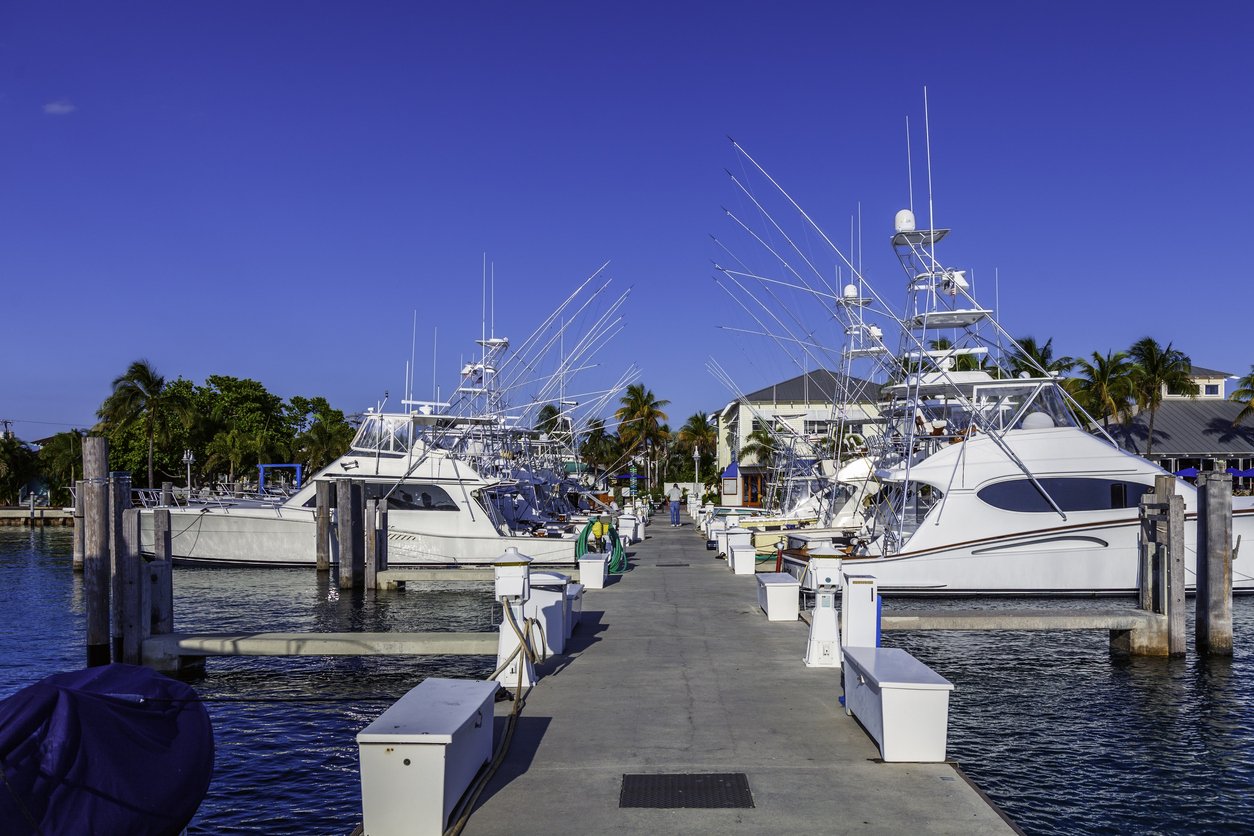
Addressing Marina Drowning Risks
February 15, 2021
During the warm spring and summer months, commercial marinas and yacht clubs are beehives of activity. Boaters and their guests flock to the water, taking advantage of favorable weather and the amenities provided by marinas. Some boaters and guests may even be tempted to swim on marina properties, especially on hot summer days. Unfortunately, swimming in and around marinas can lead to tragedy. While marina operations are typically run with an eye toward safety, drownings can and do occur. Marina owners and staff need to understand marina drowning risks as a risk management strategy, supplementing the protections of marina insurance.
Common Risks that Lead to Drownings
The proximity of marina facilities to water bodies means that the chance of accidental drownings looms over marina operations. Dockside hazards, slippery footing, and careless behavior contribute to drownings each year. Common risk factors include:
- Slip, trip, and fall hazards — including lines and cables, loose dock surfaces, wet surfaces, and the shifting of moored vessels in relation to docks or platforms.
- Overboard hazards – even seasoned mariners know that falling overboard can occur at any time. In congested and busy marinas, this can lead to drownings.
- Swimming in marina waters – swimmers can be struck by vessels or become entangled in subsurface lines and structures, sometimes resulting in drowning deaths.
- Lack of safety equipment – including life rings, egress ladders, and signage/lighting on docks.
In one study, researchers identified over 100 marina-related drownings occurring in a period between 2008 and 2017. The study showed that drownings occur for myriad reasons and can happen any time of year. It is imperative that marinas implement safety practices to prevent drownings; failure to do so can result in tragedy along with significant claims burdens on marina insurance policies.
The Phenomenon of Electric Shock Drowning
One other risk factor in marina operations is the phenomenon known as “electric shock drowning” or ESD. ESD can occur when someone in the water experiences an electric shock that leads to temporary paralysis. Unable to swim or to stay afloat as a result of the electrical current’s paralyzing effect, the individual succumbs to drowning. According to the Electric Shock Drowning Prevention Association, most of the reported ESD incidents have occurred in freshwater public and private marinas, yacht clubs, docks, and similar waterfront facilities, including personal watercraft rental operations. Children swimming in or near these facilities are the most common victims, although ESD can strike anyone of any age.
ESD occurs through contact of damaged wiring or electrical components with the waters in and around marina properties. It can be hard to pinpoint the source of the electrical current, and because the victim drowns, it may be difficult or impossible to know that electricity was the ultimate cause of death. As a result, ESD is either under- or unreported in many cases. ESD is known as the “silent killer” because there are no obvious indications that waters have electrical currents passing through them.
Risk Management: Preventing Marina Drownings
Drowning risks represent a very real hazard to the guests and staff members of commercial marinas. Thankfully, with a bit of planning and implementation of safety practices, most drownings can be prevented. This safety-oriented operation serves to support the coverages afforded by marina insurance and has the potential to save lives in the process.
First, marina owners must forbid swimming on marina properties. The temptation is there to take a dip, but the risk of drowning is simply too great. Owners should post “No Swimming” signs in prominent locations on marina grounds.
Next, regular inspection of marina properties can uncover hazards before they can cause an issue. Check for tripping hazards such as mooring lines, electrical cables, or loose dock planking. Inspections must also include any equipment that is used in marina operations, particularly those that use electricity. This may include:
- Fueling stations
- Boat lifts
- Sewage pumping facilities
- Shore power stations
- Dock lighting
The presence and availability of safety equipment is a critical component of marina operations. Regulations require life rings to be positioned within easy reach of people if a boater or guest should fall into the water. Life rings are not the only safety-oriented solution; if someone falls into the water unnoticed, he or she may not be able to reach a life ring. To prevent drownings, safety ladders must be installed at points along docks or mooring platforms. Safety extends into the hours of night, and installing adequate lighting can help boaters and their guests navigate docks and walkways.
Finally, marina owners should carefully review their current marina insurance policies. Periodic review can help to identify gaps in coverage, especially as operational risks evolve. Marina insurance and other risk management strategies, coupled with safety-oriented practices in marina operations, can greatly reduce the chances of a tragic drowning.
About Merrimac Marine Insurance
At Merrimac Marine, we are dedicated to providing insurance for the marine industry to protect your clients’ business and assets. For more information about our products and programs, contact our specialists today at (800) 681-1998.
